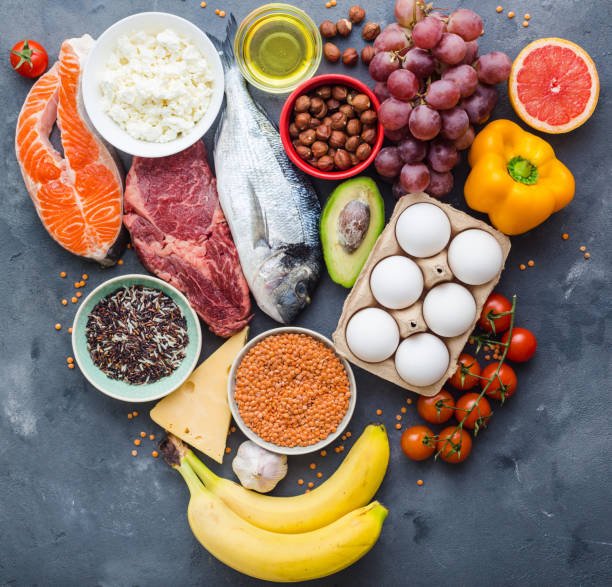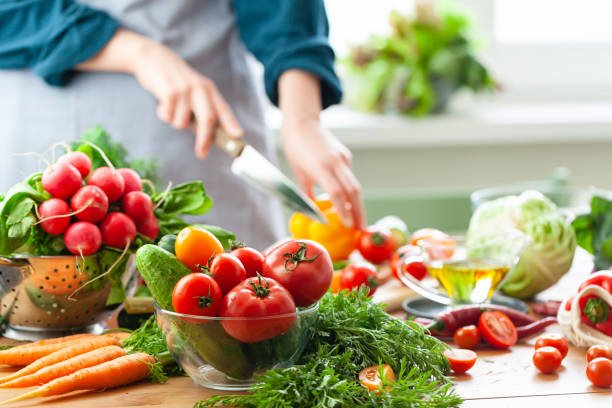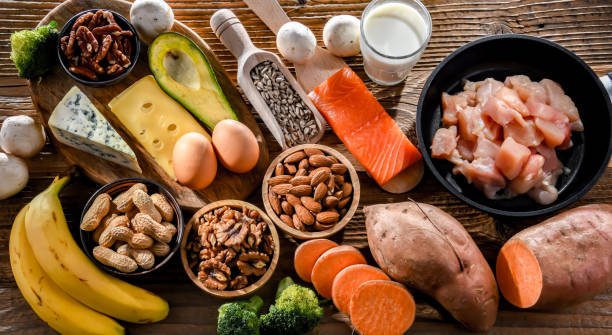Let’s be honest — the phrase “balanced diet” gets thrown around so much, it’s easy to ignore. It shows up in magazine headlines, social media posts, and doctor’s offices, but rarely do people stop to explain what it really means. More importantly, no one talks about how it actually fits into real life — you know, the one where you’re juggling work, family, fatigue, and cravings.
So let’s slow down for a moment and get to the heart of it

What Is a Balanced Diet, Really?
A balanced diet isn’t about eating perfectly. It’s not about counting every calorie or cutting carbs or jumping on the latest food trend. At its core, a balanced diet is simply about giving your body what it needs — in the right amounts and from the right sources — to function, grow, and feel good.
Think of it as building a plate (and a lifestyle) that:
- Gives you enough energy to get through the day
- Supports your immune system
- Keeps your weight stable (or helps you lose weight if needed)
- Nourishes your brain, your heart, your muscles — everything
That’s not extreme. That’s just smart, sustainable living.
The Key Ingredients of a Balanced Diet
Here’s what that looks like on a plate — and no, it’s not a rigid plan. It’s a flexible mix of nutrients:
🥬 1. Vegetables and Fruits (Color = Nutrition)
These are your powerhouse foods. Rich in fiber, vitamins, and antioxidants, they reduce the risk of chronic disease and help keep digestion smooth.
- Aim for half your plate to be veggies and fruit.
- Go for variety: dark leafy greens, berries, sweet potatoes, citrus, tomatoes — each offers something different.

🥖 2. Whole Grains (Fuel for the Day)
Carbs aren’t the enemy — processed carbs are. Whole grains like brown rice, oats, quinoa, and whole wheat bread give you energy and help stabilize blood sugar.
- Choose whole over refined.
- Watch your portions — about a quarter of your plate should be whole grains.
🥚 3. Protein (The Body’s Building Blocks)
Protein supports muscle repair, hormone production, and even immune function.
- Include lean meats, fish, eggs, beans, lentils, tofu, or Greek yogurt.
- Don’t overdo it. Quality matters more than quantity.
🥑 4. Healthy Fats (Yes, You Need Them)
Fats aren’t bad — they’re essential. The key is choosing the right kinds.
- Think avocados, nuts, seeds, olive oil, and fatty fish like salmon.
- Avoid trans fats and limit highly processed oils.
💧 5. Water (Still Underrated)
Hydration affects everything: energy, digestion, skin, mood, and even hunger cues.
- Drink regularly throughout the day — not just when you’re thirsty.
- Minimize sugary drinks and excessive caffeine.
What Balance Doesn’t Mean
It doesn’t mean eating clean 100% of the time. It doesn’t mean feeling guilty for enjoying pizza or chocolate. A balanced diet has room for enjoyment — because food isn’t just fuel; it’s also pleasure, culture, and connection.
Having a slice of cake doesn’t “ruin” your diet. What matters is consistency over time, not one meal or one day.

How to Make It Work in Real Life
No one has time to perfectly measure every meal. But here are real-world tips that actually help:
- Follow the 80/20 Rule: Eat nutrient-rich foods 80% of the time, and leave 20% for fun.
- Don’t Skip Meals: It messes with your hunger cues and can lead to overeating later.
- Cook at Home More Often: You control the ingredients and portions.
- Grocery Shop Smart: Stick to the outer aisles (fresh produce, lean meats, dairy) and go in with a list.
- Start Small: Don’t try to overhaul your diet overnight. Swap soda for water. Add a vegetable to lunch. Build from there.
Final Thoughts
A balanced diet isn’t about perfection — it’s about paying attention to what your body really needs. It’s about making intentional choices, most of the time, and letting go of guilt when life happens.
If you’re tired of yo-yo diets, constant restrictions, or food rules that make you feel like you’re always failing, this is your invitation to try something different — something realistic, nourishing, and actually sustainable.
Food should energize you, not stress you out. That’s the real balance.

